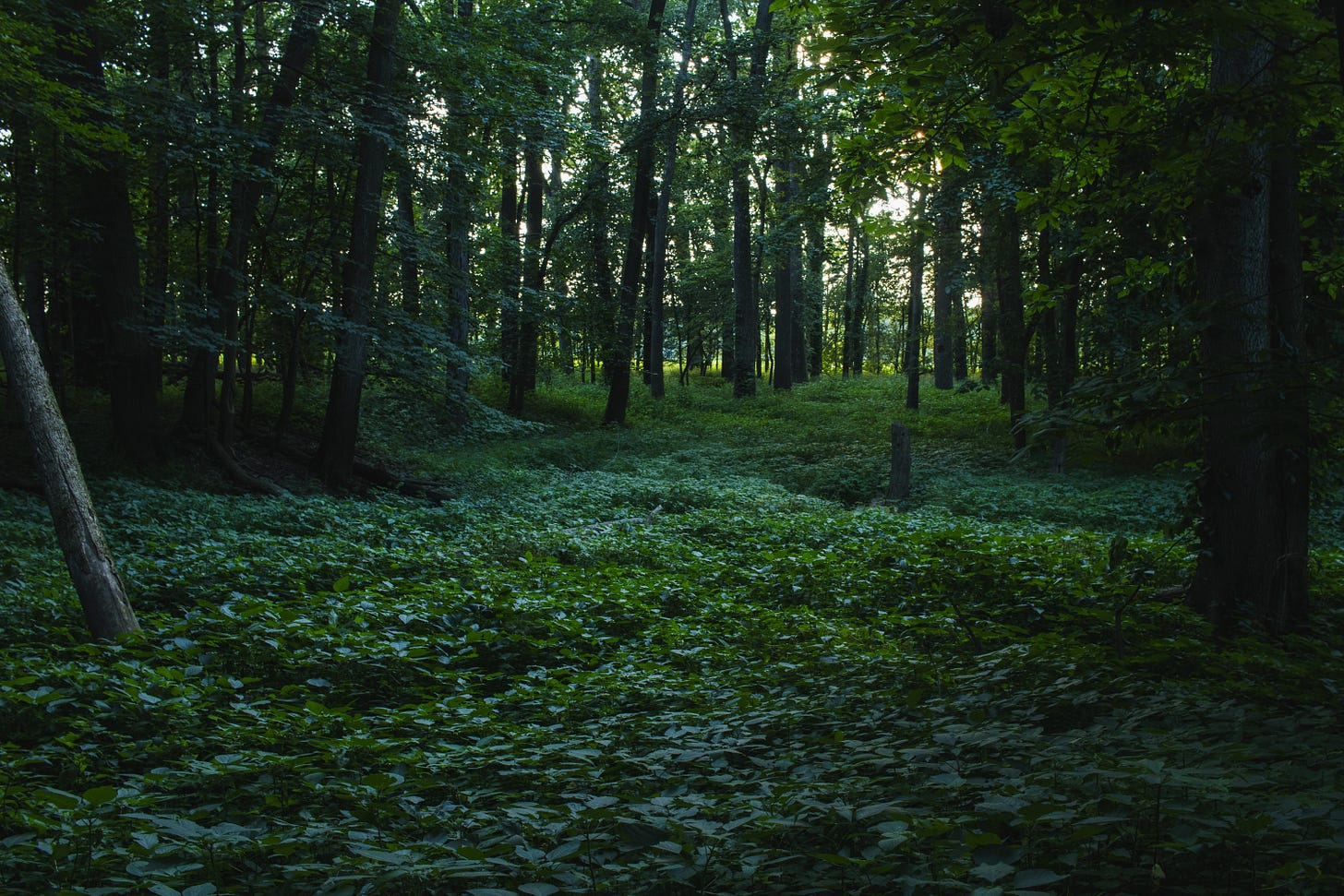The Eco-Update #7
Dispatches from the planet
What is “dark” biodiversity?
An international group of researchers published a study quantifying the scale of "dark diversity", or the number of species that could potentially inhabit an area but do not.
They found that in areas with high disturbance by human activity, only approximately 20% of the species that could live there actually did.
The researchers cited pollution as a primary reason for the discrepancy, along with habitat loss due to agricultural conversion, logging, and human-caused fires.
Another important aspect of the study is that the researchers were able to document biodiversity loss at smaller, more local scales than previously possible. To do this, they used a large network of sites and worked over years to collect data on where species were and were not present.
Several measures of human activity were strongly associated with species absences where they could exist. Those include: human population density, electric infrastructure, railways, roads, built environments and croplands.
My personal interpretation of this is that this study is an important step in our ability to quantify biodiversity loss across scales, but the researchers have not adequately addressed the causes. Simply linking the losses to human activity does not identify what the cause of the human activity is. Given that these are patterns of economic development, it's capitalism that is driving expanded land use and consumption. The global drive to accumulate profit for the wealthy, initiating more production for the sake of production, rather than simply meeting society's needs, is the primary cause of land use and environmental degradation. That, ultimately, is the problem that needs solving.
Freakosystems
O'ahu is Hawaii's third largest island, and it's lowland forests are now almost completely lacking any of the plant species that grew there for millennia before humans arrived. Settler colonialism has caused widespread extinctions and introduced species to the island.
The ecosystems of Hawaii now represent centuries of more or less random perturbations and introductions, but are also exhibiting interesting signs of structure and organization.
For example, some species of birds are adapting into specialist roles, distributing seeds that was once done by species that are now extinct.
Researchers are finding that the interactions among species in Hawaiian forests resemble those of other locations with less human disturbance.
Ecologists are increasingly identifying these kinds of "novel ecosystems", that diverge from their baselines state as a result of human disturbance. Human-made ecosystems have been studied in the Netherlands, Brazil, and and Scotland. What's interesting about these systems is that although humans may have caused them, they don't seem to require human intervention to sustain them.
Some estimates suggest that as much as 40% of the planet's terrestrial ecosystems have transitioned into these new states.
This opens up a messy situation, though, by centering questions like how we define what an ecosystem is (something I recently published on), and where is the threshold for determining when an ecosystem becomes "novel".
Islands like Hawaii are ideal for studying ecological changes because of their isolation. The plants and animals that migrated there over long periods of time adapted and evolved into species not found anywhere else on Earth, allowing ecologists to more easily study the changing dynamics as human society becomes more globalized.
Of course, the other side of this is that these changes represent losses to ecosystems. It's unclear to what extent environments can be returned to some previous state, but research is suggesting that there are certain ecosystems, like in Hawaii, that can't be returned at all. Climate change is, unsurprisingly, exacerbating this problem.
StoichLife
What are the elemental building blocks of life? Broadly, we know that nitrogen, phosphorous, and carbon make up the majority, but how those percentages break down across taxonomic groups and geographic locations has been mostly unknown. A recent study addressed this by producing a new dataset called StoichLife, which they built from records on nearly 6,000 species. The researchers state that this new dataset will allow ecologists to study both global patterns and context-dependent changes with unprecedented depth.



